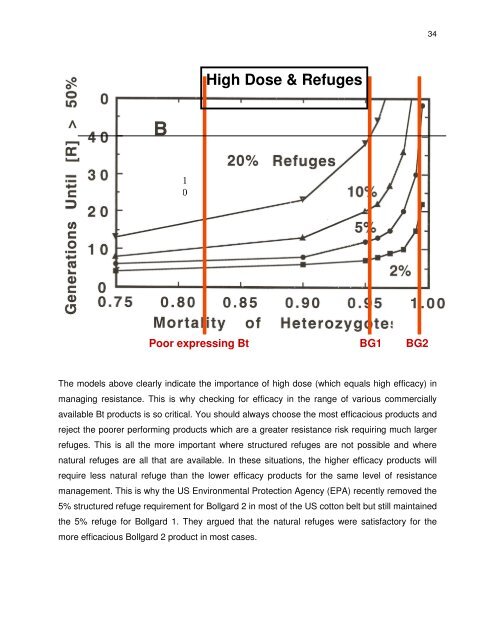ChangingCottonLandscapeNeilForrester
ChangingCottonLandscapeNeilForrester
ChangingCottonLandscapeNeilForrester
You also want an ePaper? Increase the reach of your titles
YUMPU automatically turns print PDFs into web optimized ePapers that Google loves.
The models above clearly indicate the importance of high dose (which equals high efficacy) in<br />
managing resistance. This is why checking for efficacy in the range of various commercially<br />
available Bt products is so critical. You should always choose the most efficacious products and<br />
reject the poorer performing products which are a greater resistance risk requiring much larger<br />
refuges. This is all the more important where structured refuges are not possible and where<br />
natural refuges are all that are available. In these situations, the higher efficacy products will<br />
require less natural refuge than the lower efficacy products for the same level of resistance<br />
management. This is why the US Environmental Protection Agency (EPA) recently removed the<br />
5% structured refuge requirement for Bollgard 2 in most of the US cotton belt but still maintained<br />
the 5% refuge for Bollgard 1. They argued that the natural refuges were satisfactory for the<br />
more efficacious Bollgard 2 product in most cases.<br />
1<br />
0<br />
Poor expressing Bt<br />
High Dose & Refuges<br />
BG1 BG2<br />
34


